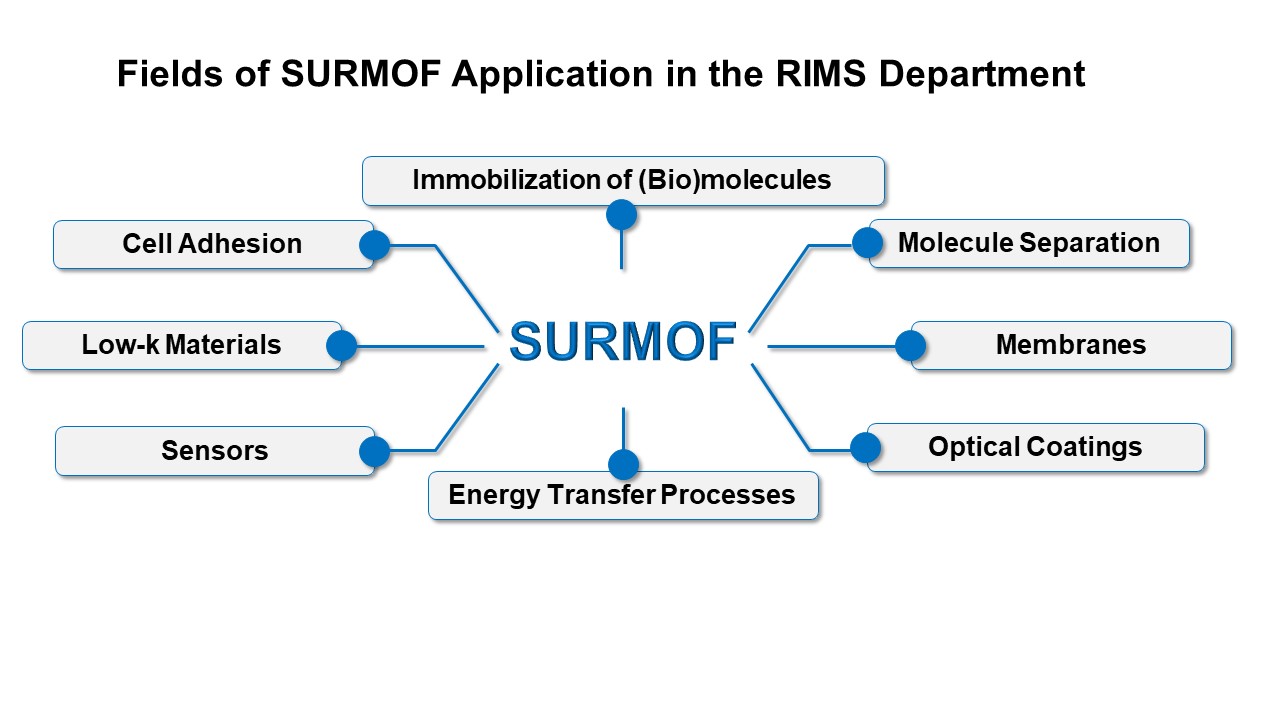Department of Robot-Assisted and Information-Based Materials Synthesis
Accelerated Syntesis of highly porous coatings
Department Robot-supported and Information-driven Material Synthesis (RIMS)
The chemical functionalization of interfaces plays a major role in many areas of daily life. For example, textiles or glass panes can be given water-repellent properties through appropriate treatment, or the surfaces of implants and stents can be chemically modified in such a way that they have antibacterial properties and at the same time prevent rejection reactions in the body. The thickness of these functional coatings can be very thin; in extreme cases, they consist of only one layer of molecules (e.g. self-assembling monolayers, SAMs).
The RIMS department is researching a special form of surface coating that consists of thin films based on surface-anchored metal-organic frameworks (SURMOFs). SURMOFs represent a highly porous crystalline class of materials that are grown on the surfaces of different materials (oxides, glass, metals, polymers) using layer-by-layer processes. These layers serve, for example, as highly efficient storage devices for molecules (gases, biomolecules, dyes, etc.), can be used in the form of membranes to separate gases and are applied as coatings for sensors to increase their sensitivity and selectivity.
For many applications, SURMOFs must meet high quality standards (low roughness, high transparency, exact crystalline orientation, stability against temperature and chemical influences). In order to optimize the properties of the SURMOFs, the department develops and applies robot-assisted synthesis processes that enable time-saving, targeted, resource-saving - and therefore sustainable - autonomous material development supported by the use of artificial intelligence and machine learning. Different surface analytical methods (IRRAS, XRD, AFM, ToF-SIMS, XPS, EDX, ESEM) are used for quality control. The standard use of electronic laboratory notebooks enables the development of a broad database that can be automatically evaluated for later developments.
Working groups
Competence / Field of activity
|
Dynamic processes in porous films PD Dr. L. Heinke |
Mass transport, adsorption and diffusion, dynamic processes and structural changes in nanoporous films |
|
Electron microscopy and microanalytics Dr. M. Schwotzer |
|
|
Dr. A. Welle |
Mass spectrometry, imaging, and depth profiling of organic and inorganic samples |
|
PD Dr. M. Tsotsalas |
Preparation / characterization of organic networks and their use as biologically active substrates |
|
S.Heißler |
Surface analysis, IR and Raman spectroscopy, photoacoustic spectroscopy |
|
Nanomedicine
Prof. Dr. L. De Cola |
Main research areas
- Self-assembling monolayers (SAMs)
- Metal-organic frameworks (MOFs)
- Surface characterization
- Surface modification
Further information

